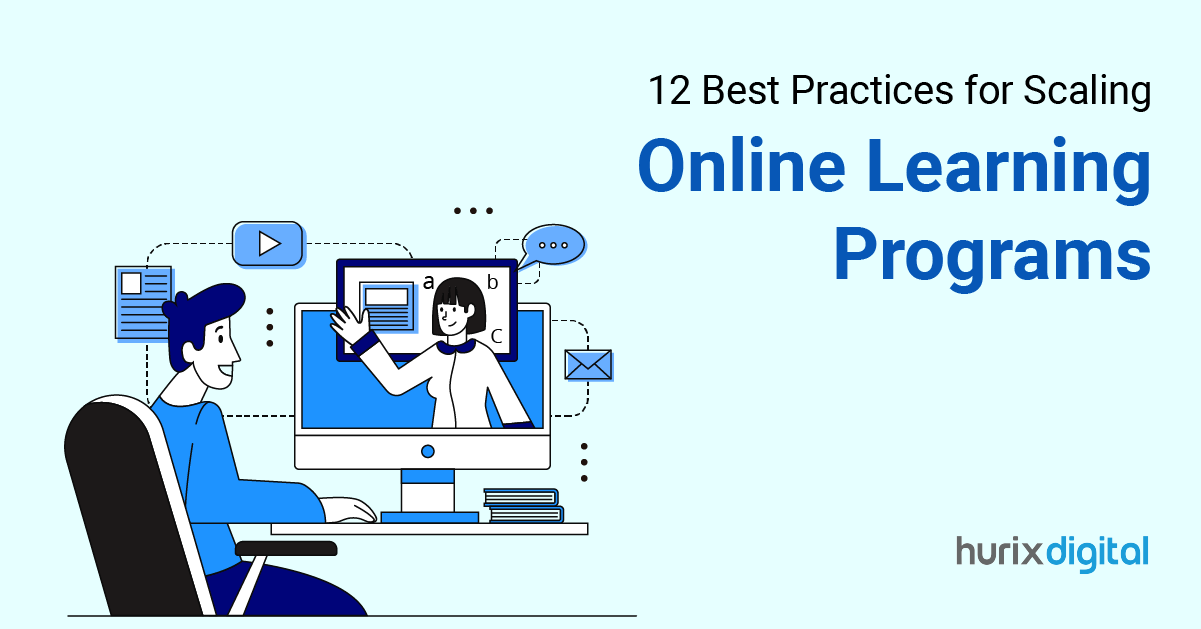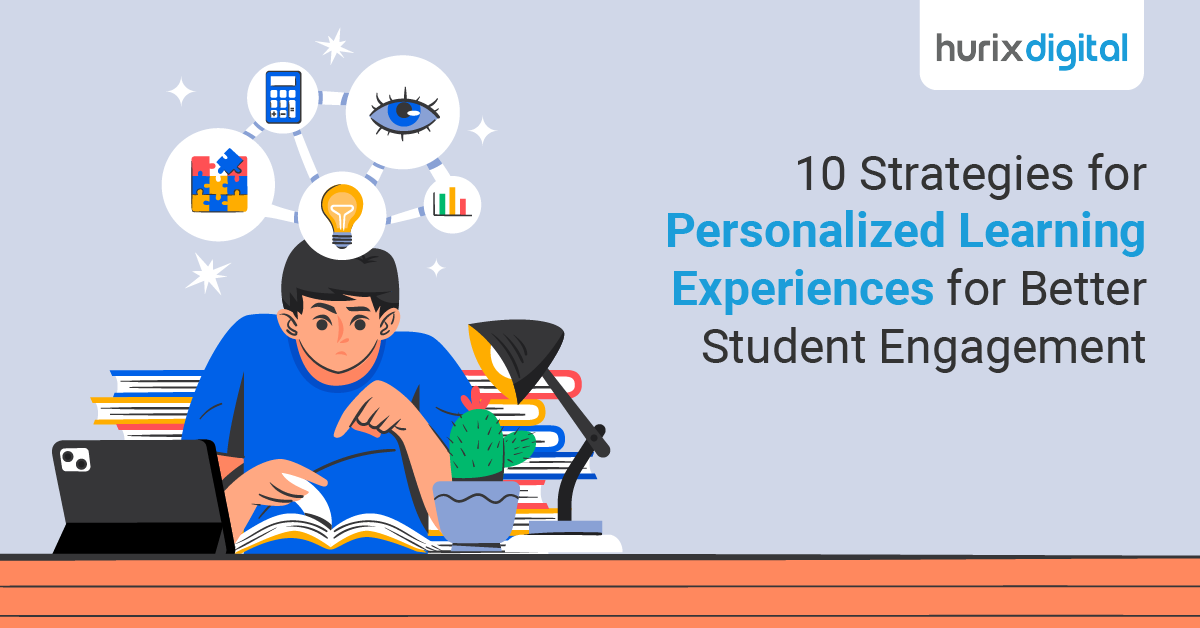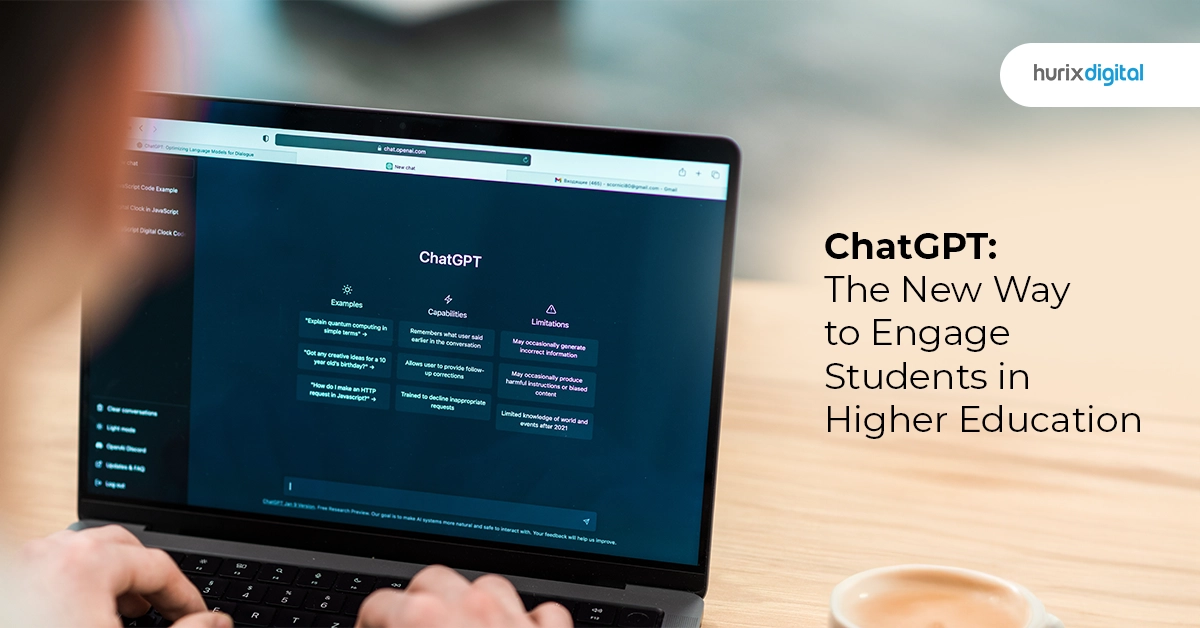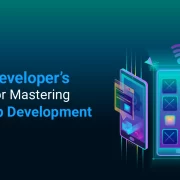
12 Best Practices for Scaling Online Learning Programs
Summary
This article outlines best practices for scaling online education, including starting small, using robust technology, quality content, microlearning, and data analytics.
Online learning programs have become a pressing reality for higher education institutions. Heads of online learning/education are looking for best practices to meet the increasing demand for online learning. These programs help build relevant skills, engage students, and help grow educational institutions.
The global online learning market is projected to reach $374.3 billion by 2026, growing at a CAGR of 3% from 2020 to 2024. Almost all universities offer online classes, with many institutions having shifted to full-time online or hybrid models.
This shows the significance of the growth of online learning programs. This extensive guide will help you understand the importance of applying best practices and scaling educational technology.
Table of Contents:
- Reasons for Scaling Digital Learning Programs
- Brief Steps for Scaling eLearning in Your Organization
- 12 Online Education Best Practices for Scaling Digital Learning Programs
- Start Small to Scale Big
- Develop a Comprehensive Plan
- Promote Jointly Designed Courses
- Select the Right LMS
- Start with a Pilot Program
- Make the Best Use of Technology
- Create Comprehensive Tutorials and FAQ Guides
- Educational Content Quality and Consistency
- Utilize Advanced Technological and Cloud-Based Solutions
- Enhance User Experience
- Implement Microlearning
- Use Data to Track Learning
- Conclusion
Reasons for Scaling Digital Learning Programs
There are several reasons for scaling eLearning solutions for students:
- The expansion of educational resources introduces new solutions that can bridge skill gaps, support dispersed student strength, and improve educational needs. Enhanced eLearning solutions access benefits both educators and the student’s bottom line.
- Scaling eLearning solutions necessitates reskilling and upskilling efforts, which ensure student success on the professional front.
- More eLearning opportunities keep students engaged and motivated to improve their skills.
- Students can apply newly acquired skills in practical and real-world scenarios, which enhances their academic performance and communication.
- It encourages a culture of continuous learning, leading to higher morale, a growth mindset, increased innovation, and better problem-solving and decision-making capabilities.
Brief Steps for Scaling eLearning in Your Organization
Let’s explore the steps for scaling online learning programs in higher education
- Define clear objectives
- Start with a pilot program
- Invest in robust technology
- Develop quality content
- Provide faculty training and support
- Ensure student support
- Encourage collaboration
- Utilize data and analytics
- Implement blended learning
- Focus on accessibility
- Establish clear communication channels
- Secure funding and resources
- Promote a culture of continuous improvement
Also Read: 5 Bottlenecks in Higher-Ed Educational Program Development (and How to Fix Them)
12 Online Education Best Practices for Scaling Digital Learning Programs
Here are some online education best practices that educational institutions can implement to enhance eLearning:
1. Start Small to Scale Big
It is important to address the most urgent need first; focus on the program with the highest potential impact, and select the easiest program to transition online.
2. Develop a Comprehensive Plan
Gather a group of students, assess available resources, and make sure you have the right technological tools and platforms.
It is equally important to establish clear milestones and deadlines. Further, it is necessary to decide the optimal length for your training programs. Focus on course content and create materials like PowerPoints, infographics, and videos that can be reused.
3. Promote Jointly Designed Courses
Utilize the expertise of various instructors and identify learning outcomes. Enhance learning quality by exposing students to applications of concepts. Leaders can also promote a sense of community among instructors, which reduces individual burden.
4. Select the Right LMS
A central team should provide project management and coordination. It is important to choose the right LMS that can adapt to growing needs in the educational sector. The right platform will ensure your system can handle a larger audience without compromising functionality or user experience.
Here are some best practices Best Practices for eLearning Programs:
- Ensure the LMS can handle a growing number of users and can work with existing systems.
- The LMS should support various types of content and should have an intuitive interface that is easy for both instructors and students to use.
- Ensure the platform is accessible to all students, including those with disabilities.
- Look for robust content creation and management tools along with built-in communication tools like discussion.
- The LMS should offer comprehensive analytics to track student engagement and ample training materials and resources to help faculty use the platform.
5. Start with a Pilot Program
Start with a pilot program to test your ideas on a smaller scale. This trial phase allows you to refine the program and highlight its value. Track how much time is spent on each student and analyze which tasks consume the most.
eLearning allows learners to absorb five times more material without increasing the time spent on training, and it takes 40-60% less time to complete.
6. Make the Best Use of Technology
In the U.S., 75% of schools plan to operate online or via a hybrid model, and 80% have purchased or are purchasing additional technology to support online learning. When it comes to scaling educational technology, you must follow effective online learning strategies like:
- Using LMS features to automate grading for quizzes, multiple-choice questions, and other objective assessments.
- Automating news, academic updates, and announcements to provide timely information without manual intervention.
- Setting up reminders for deadlines, upcoming classes, and other important events to keep students on track.
7. Create Comprehensive Tutorials and FAQ Guides
It is significant to develop video tutorials that cover common questions and important course concepts. Maintain a comprehensive FAQ section that addresses frequent queries and issues. Educational leaders can also offer detailed guides for submitting assignments and other essential educational tasks.
8. Educational Content Quality and Consistency
One of the most critical best practices for eLearning programs is to develop courses that can be easily updated and expanded. Here are some tips:
- You must use multimedia, interactive elements, and real-world examples to engage learners. Always keep content current and relevant by updating it regularly.
- Next, you must define what you want to achieve with your content. This could include learning outcomes, skill acquisition, or student engagement.
- It is equally important to understand the learning preferences, and needs of your students so that you can personalize content effectively.
- Use standardized templates for course materials, presentations, and assessments.
- Create comprehensive guidelines detailing style, tone, formatting, and multimedia usage.
- Use high-quality videos and animations to explain complex concepts. Ensure they are professionally produced and accessible.
- Incorporate quizzes, simulations, and discussion forums to engage students and reinforce learning.
- Break down content into smaller, manageable ones that can be easily updated.
9. Utilize Advanced Technological and Cloud-Based Solutions
Cloud-based platforms can scale resources based on demand. These platforms offer flexibility and cost-effectiveness. Ensure that all learning materials are accessible from anywhere, at any time, on any device. Here are some more tips for applying technology in online learning program development:
- Use AI to create personalized learning paths based on individual student performance and preferences.
- Employ AI tools to automate the grading of objective assessments, which can free up faculty time for more complex evaluations.
- Implement AI-driven chatbots to provide 24/7 support for students, so that all common questions can be answered.
- Utilize VR and AR to create immersive learning experiences, especially for subjects that benefit from visualization and hands-on practice.
- Develop simulations for complex scenarios that allow students to practice skills in a controlled, virtual environment.
- Conduct live classes and webinars using video conferencing tools to facilitate real-time interaction.
- Record live sessions and make them available for students to review at their convenience.
- Use gamified elements and gamified assessments to make learning more enjoyable and effective.
10. Enhance User Experience
Ensure your platform is user-friendly and accessible to all learners. Provide robust technical and academic support to address issues promptly. Some other best practices for eLearning programs include:
- Maintain a consistent layout across all course pages
- Ensure all course materials are mobile-friendly and promote the use of mobile apps that provide access to courses.
- Use data and AI to create personalized learning paths and offer prompt and constructive feedback on assignments and assessments.
11. Implement Microlearning
Incorporate microlearning to boost attention and engagement. You can try scaling digital learning programs by sharing short, digestible videos with students that can fit into the workday easily. Use diverse formats and make sure all microlearning content is mobile-friendly. Arrange microlearning units sequentially and apply short quizzes at the end of each microlearning unit to assess understanding.
12. Use Data to Track Learning
Monitor metrics like engagement, discussion activity, video views, progress, and completion rates to evaluate and refine your training program as it scales.
- Track metrics such as time spent on the platform, discussion participation, and course material interaction.
- Monitor grades, completion rates, assessment scores, and progress through course modules.
- Use predictive analytics to identify students at risk of falling behind or dropping out.
- Develop targeted intervention strategies to support at-risk students and sentiment analysis tools to interpret qualitative feedback.
- Track whether students are achieving the intended learning and assess which course materials are most accessed.
Also Read: Data Analytics and Machine Learning is Transforming Education. How?
Conclusion
Scaling an online training program requires careful planning. You should strategically select the right technology, and assess learner needs before starting a pilot eLearning program. Then refine your approach based on feedback, and always offer high content quality and consistency, in your eLearning modules. You must also make the most of blended learning techniques, and implement microlearning to enhance the learning experience.
Collaborate with experts at Hurix Digital and get valuable resources and support to scale your eLearning program. Considering this guide, organizations can successfully enhance their online learning program scalability and promote a culture of continuous learning.
Get in touch or Book a call with us today!

Senior Vice President – Business Development
Over 25 years of experience in the edtech and workforce learning industry with strong skills in Business Development, Customer Relationship Management (CRM) and Strategy.







